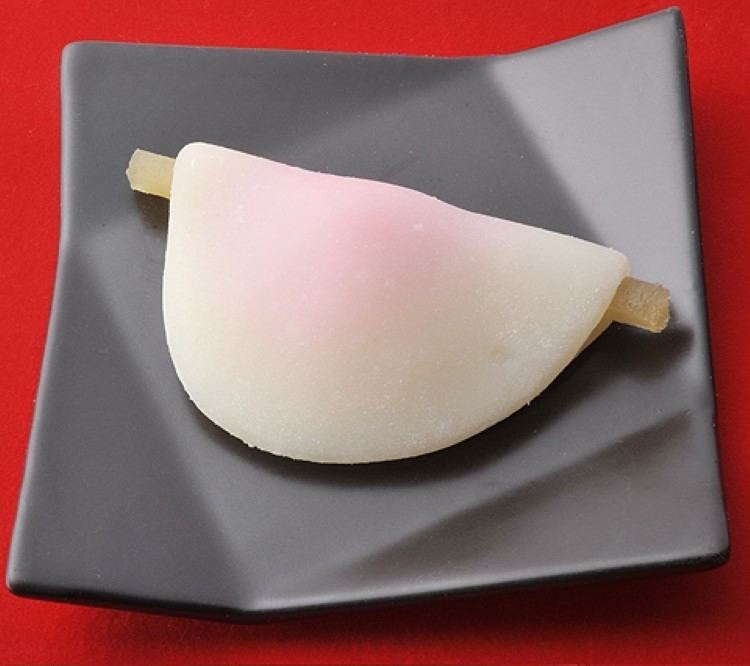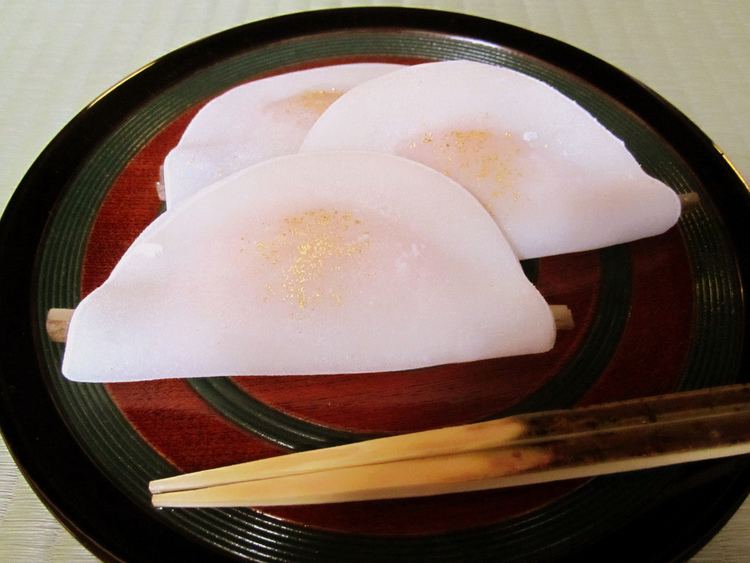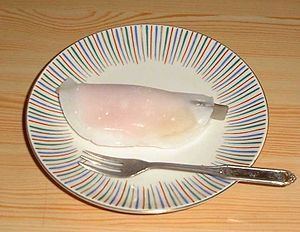Type Wagashi | ||
 | ||
Similar Mochi, Greater burdock, Miso, Gyūhi, Namagashi | ||
hanabiramochi white rice cake pink rice cake white miso bean paste burdock
Hanabiramochi (葩餅) is a Japanese sweet (wagashi), usually eaten at the beginning of the year. Hanabiramochi are also served at the first tea ceremony of the new year.
Contents
- hanabiramochi white rice cake pink rice cake white miso bean paste burdock
- Hanabiramochi dance
- Origin
- Form
- Significance and symbolism
- References

Hanabiramochi dance
Origin

The name "hanabiramochi" literally means "flower petal mochi". The original form of Hanabiramochi is Hishihanabira, a dessert that was eaten by the Imperial family at special events coinciding with the beginning of the year.

Hanabiramochi was first made in the Meiji Era (8 September 1868 – 30 July 1912), but it is now a familiar New Year wagashi.
Form

The exact shape of hanabiramochi is strictly defined by tradition. The white mochi covering is flat and round, folded over to form a semicircular shape, and must have a pink color showing through in the center of the confection, fading to a white at the edge. Unlike a daifuku, the mochi must not completely seal the insides.

In the center of a hanabiramochi is a layer of anko, a sweet bean paste, commonly the white kind made from sweetened mung beans. In the very center is a thin strip of sweetly flavoured gobo (burdock), which protrudes from the mochi on both sides.
Significance and symbolism
Each element of the hanabiramochi is significant:
The red colour showing through the white mochi is not only appropriate to the celebration of the new year, but also evokes the Japanese apricot/plum (ume) blossom, which in turn represents the purity, perseverance, and renewal associated with the New Year.
The gobo represents pressed ayu, a fish exclusive to East Asia, and a prayer for a long life.
